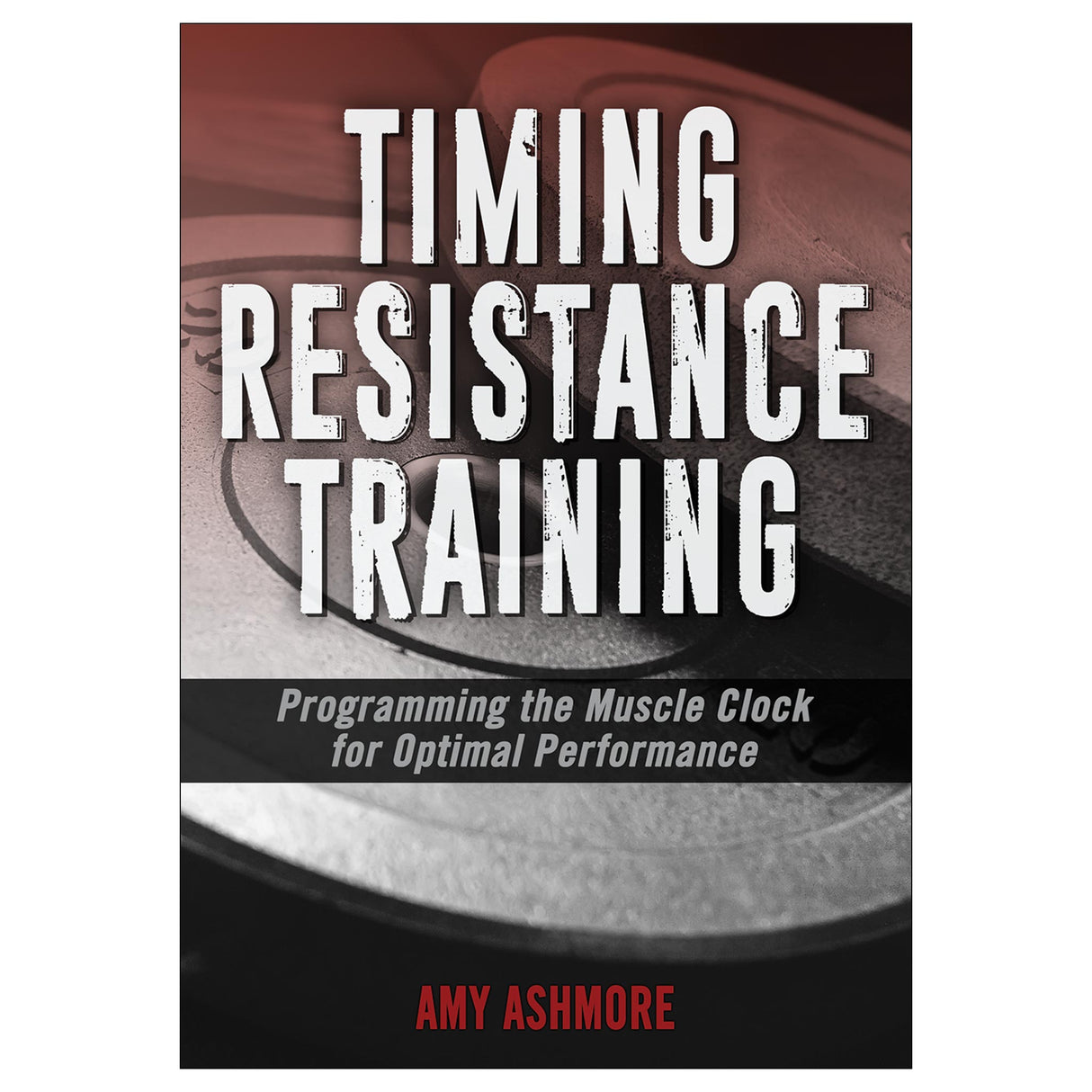Timing Resistance Training
Programming the Muscle Clock for Optimal Performance
Author: Amy Ashmore
$8.99 USD
Since periodization training’s emergence in the 1950s, sport scientists have known that timing is one of the most critical programming variables influencing peak athletic performance. Modern research has taken the application of timing to exercise programming in a new direction, discovering the existence of time clocks inside each of the more than 600 skeletal muscles. Timing Resistance Training examines how these internal clocks use cues provided through exercise programming to regulate physiological processes for better performance.
Not just another periodization book, Timing Resistance Training teaches you how to manipulate muscle clocks to train and perform at your best every day—right down to the specific time of day that is best for your body. You will learn to view the muscles as proactive independent physiological systems that can be trained to “think” by delivering timing cues to muscles that tell them when to activate key physiological actions that influence the entire body.
Then you will learn how to cue those internal clocks with purposeful training methods like biomechanical pairing of exercises, complex training, and concurrent training. The book addresses rest as an integral training variable and explores the timing of activity–rest cycles versus recuperation only. The text also discusses the concept of undertraining, an intentional program design adjustment that uses the ability of muscle to anticipate training.
The final chapters offer tools to create your own training programs for strength, power, and flexibility. These chapters include sample single-session workouts, weekly workouts, and long-term programming routines. With Timing Resistance Training, you can become more purposeful in planning and better utilize strategic timing to get the most out of muscles clocks and achieve optimal performance.
Earn continuing education credits/units! A continuing education exam that uses this book is also available. It may be purchased separately or as part of a package that includes both the book and exam.
Audience
Strength and conditioning professionals, athletic trainers, personal trainers, and physical therapists who work with athletes; also performance athletes with advanced knowledge of training.Chapter 1. What Is a Muscle Clock?
Muscle Clocks: Description and Functions
The Master Clock
Regulation and Communication
Application to Resistance Training
Conclusion
Chapter 2. Overcoming Chaos, Confusion, and Interference
Molecular Competition
Interference Theory
Cardiovascular Endurance Training
Muscular Endurance
Muscle Activation Patterns
Competing Muscle Adaptations
Cardiovascular Training Interferes With Resistance Training
Interference Mechanisms
Avoiding Interference
Resistance-Trained Athletes
High-Intensity Interval Training, Sleep, and Athletes
Evidence From Aerobic Endurance Athletes
Time of Day
Programming Summary
Conclusion
Part II. Learn the Tools for Exercise Programming
Chapter 3. Muscle Clocks’ Need for Cues and Recovery
Environmental Cues
Activity–Rest Patterns
Physiological Cues
Exercise Training and Programming
Conclusion
Chapter 4. Applying Biomechanical Similarity to Resistance and Plyometric Exercises
Biomechanical Similarity
Exercise Categories
Conclusion
Part III. Create Effective Training Programs
Chapter 5. Training Muscles to Think and Anticipate
Motor Learning Influences
Programming
Sample Program
Programming Summary Statements
Age-Related Declines in Anticipation
Conclusion
Chapter 6. Undertraining to Maximize Performance
Training Load
Intentional Undertraining
New Approach to Muscle IQ
Rationales for Undertraining
Benefits of Undertraining
Differentiated Programming
Conclusion
Chapter 7. Using Muscle Clocks to Train for Strength
Paired Exercise Resistance Training Model
Resistance Training Programming
Resistance Exercise Pairing Routines
Sample Workouts
Conclusion
Chapter 8. Using Muscle Clocks to Train for Power
Complex Training
Complex Training Programming
Resistance and Plyometric Exercise Pairing Routines
Sample Workouts
Conclusion
Chapter 9. Using Muscle Clocks for Concurrent Training
Concurrent Training
Competing Mechanisms
Using Muscle Clocks to Avoid Interference in Programming
Cardiovascular Programming to Improve Resistance Training Outcomes
Programming Summary Statements
Conclusion
Chapter 10. Using Muscle Clocks to Improve Flexibility
Flexibility and Muscle Performance
Types of Stretching
Muscle Pliability Is a Timing Cue
Muscle Length
Strength and Power Stimulus
Recovery Aid
Flexibility Programming
Programming Summary Statements
Conclusion
—Kevin McGuire, Managing Editor of American Fitness Magazine
"I have been privileged to have a professional association with Dr. Ashmore for the past 10 years, during which time she has impressed me with her unique ability to effectively bridge the gap between the scientist and the practitioner."
—Cedric X. Bryant, PhD, President and Chief Science Officer of American Council on Exercise
"Amy has been writing and presenting for IDEA since 2002. She can get fitness professionals fully engaged in the complexities of biomechanics and physics. She is an intelligent professional, creative teacher, and superb educator."
—Sandy Todd Webster, Editor in Chief for IDEA Health & Fitness Association





